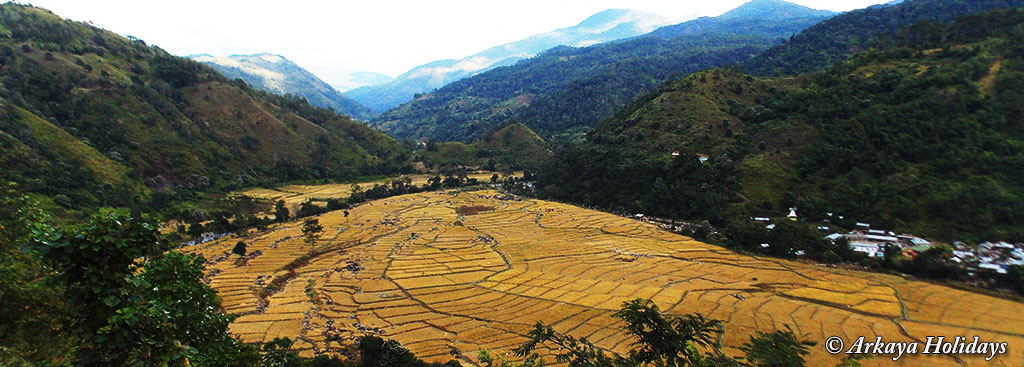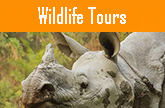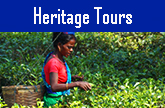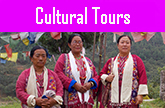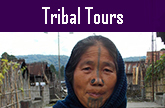Arunachal Pradesh Tourist Places
Bhalukpong
Situated on the Assam-Arunachal border, Bhalukpong is widely acclaimed to be a popular tourist spot with the Kameng River flowing through it. It is a famous location for picnic lovers and adventurous tourists.
Tipi Orchid Sanctuary:
Also known as Tipi Orchidarium, this sanctuary is a home to a large collection of about 500 varieties of colorful orchids. Some rare and endangered species of orchids are displayed in the glass house. Some of these orchids have a quality of blooming for a longer duration. This sanctuary serves as an orchid research and development centre set up by the Department of Environment and Forest under Govt. of Arunachal Pradesh for the conservation and development of new variety of species.
Bomdila
Snow-covered mountains, marvelous countryside, lush green forests, Apple orchards and Buddhist Gompas endows Bomdila, located at an altitude of about 8,000 feet above sea level. It is the land of the Monpa, the Sherdukpen, the Aka, the Miji and the Khawa tribes. It is a perfect place for trekking and hiking trails and a centre of local crafts and handloom products. Bomdila offers a magnificent view of Kangto and Gorichen peaks (the highest peaks in Arunachal Pradesh) amidst the Himalayan landscape and snow-capped ranges.
Bomdila Monastery:
Bomdila Monastery is designated to be the proud possessor of the largest and newest monastery called ‘The Gelugpa Gompa’. A reflection of Buddhist and Tibetan heritage and culture, the monastery was established during 1965-66, by the 12th reincarnate of Tsona Gontse Rimpoche. The monastery stands as a comparison to Tsona Gontse Monastery at Tsona in South Tibet started during 15th Century. Present renovation added to this Gompa is the main prayer hall, which was dedicated to the service of God by his Holiness, the 14th Dalai Lama on 13th October, 1997 AD.
Dirang
A sub-divisional head quarter of West Kameng district, Dirang is situated at an altitude of 4910 feet above sea level. It is the habitat of the Tribal Mahayana Monpas. The mild and soothing weather of Dirang with a pleasant wind blowing across the valley endows Dirang as a perfect hill station. Moreover, it also serves as a site for adventure sports like trekking, nature walk, bird watching, sightseeing etc.
Dirang Village (Basti):
Dirang village, locally known as Dirang Basti is a beautiful village inhabited by Monpa tribal people. The Monpas are the tribal inhabitants residing in Tawang and West Kameng districts of Arunachal Pradesh. The Monpas are the supporters of the lamaistic tradition of Mahayana Buddhism. The presence of beautifully decorated Buddhist Gompas in the village reflects their religious enthusiasm.
Sangti Valley:
An ideal holiday destination, the Sangti Valley appeals the travelers to its wooded hillsides and magnificent valleys. The main attractions of this valley are bird watching and the seasonal presence of the endangered Black-necked Crane during the winter months.
Dirang Dzong:
Dirang Dzong Fort is a representation of the culture of the Monpas. This fort, built in 1831 A.D. served as a centre of all the administrative activities of the Monpas during those times. The fort is set atop on a hill top consisting of a four storied stone building. A wooden gate designed in local architectural pattern adds to the splendid uniqueness of the fort.
Kalachakra Monastery:
Kalachakra Monastery is a 500 years old Buddhist Gompa. It belongs to the Gelugpa school of Tibetan Buddhism.
Hot Water Spring:
A famous picnic spot which beckons tourists as well as the local people. These hot springs are designated to possess some special healing properties, which makes it a main centre of attraction even to the locals. They mainly visit these springs for holy baths, as it is locally believed that a dip in these springs cleanses all sins and skin diseases.
Tawang
Tawang, the majestic homeland of the Monpas, shares international borders with Tibet and Bhutan standing at an altitude of about 10,000 feet above sea-level. It showcases a scenic view of snow-capped mountain ranges, silent and typical tribal villages, uneven hills, enchanting streams and waterfalls and quiet lakes. Tawang is the abode of the Mahayana Buddhist sect replete with magnificent Buddhist monasteries. Moreover, it is also an adventure’s delight as it offers ample scope for exciting trekking and mountaineering experiences.
Jaswant Garh:
The resting abode of the valorous son of the soil, Jaswant Garh is the memorial place built in honor of Mahavir Chakra awardee (posthumously), Jaswant Singh Rawat. It speaks of the indisputable spirit of this patriot who fought continuously for 72 hours (along with 2 other soldiers) killing 300 Chinese soldiers during 1962 Indo-China War.
Sela Pass:
The entrance to the Tawang Valley, this narrow pass stands at an altitude of 13,714 feet featuring a landscape of frozen lakes, enchanting tiny flowers of different shades, uneven roads and remains of landslides.
Nuranang falls:
Nuranang waterfall, locally known as Phong Phongma waterfall is located at Jung. The waterfall exhibits a spectacular view of natural beauty.
Rock Paintings:
The rock paintings located near Jung includes rock carvings of Lord Buddha Shakyamuni, Avalokesteshuara and Guru Padmasambhava. This spot dedicated in the name of world peace and well being of all people by the former Chief Minister of Arunachal Pradesh, Late Dorjee Khandu, reflects his selfless love for his subjects and ardent devotion to Buddhism.
Lhou Village:
Lhou village is an ancient Monpa village. The origin of the state dates back to 16th Century or earlier. Buddhist legend speaks of the Monpa tribe as migrants of the plains to Tawang while the Monpa tradition narrates them to be the migrants from Sikkim and Phari. The base of their economy is agriculture, mainly terrace cultivation. Breeding of Yak and mountain sheep is also practiced by some people. The Monpas are the supporters of the lamaistic tradition of Mahayana Buddhism. The presence of beautifully decorated Buddhist Gompas in the Monpa villages reflects their religious enthusiasm.
Tawang Monastery:
Tawang is home place of the second largest monastery in the world. The Tawang Monastery is set amidst snow-capped mountains and beautiful valleys. It houses about 450 monks, their residential buildings, library, meeting hall, community kitchen and a three storied prayer hall called Dukhang. Established during the mid 16th century, this monastery is renowned to be the prominent centre of the Gelugpa sect, the socio-religious hub of Tawang for the last 400 years and also a base for Buddhist cultural studies. This magnificent monastery is a visitor’s attraction for its beautifully carved 30 feet high, gold plated Bronze idol of Lord Buddha. It treasures a large number of images, Thangkas, mural paintings, and sacred Buddhist ancient scriptures lettered in Gold.
Urgelling Monastery:
The birthplace of His Holiness, the 6th Dalai Lama, Urgelling Monastery was established by the Lama Urgen Sangpo. This monastery houses many ancient Buddhist relics along with the footprints and fingerprints of the Dalai Lama, kept for visitors to seek blessings.
Tawang War Memorial:
A 40 feet multi-colored war memorial built in honor of the martyrs who sacrificed their lives during 1962 Indo-China War. Locally called ‘Namgyal Chorten’, the memorial is constructed in a stupa design. It bears the names of 2420 warriors written in Gold on 32 black granite plaques.
Anis Gompa (The Nunneries):
The Nunneries are women monasteries, where the nuns adopt priesthood willingly without any compulsion. The oldest of Anis Gompa is Brahma-dung-chung Anis Gompa, commissioned by Lama Karchan Yeshi Gelek in 1595 A.D. Gyangong Ani Gompa, Singur Ani Gompa, Gorsen Chorten are some of the prominent woman monasteries.
Craft Centre:
Tawang is rich in unique crafts and handloom products. Variety of craftsmanship is displayed in carpet weaving (woolen carpets), wood carving, handmade papermaking, Thangka painting showcasing a Buddhist influence and sandalwood making.
Bumla Pass:
Situated at an altitude of 16,500 feet. Bumla Pass displays the monuments of the brave soldiers who sacrificed their lives for the sake of the nation during 1962 Indo-China War. At present, the pass is a military border post for both Indian and Chinese army.
Sangstser Lake:
Tawang is acclaimed as a nature’s delight for its shinning silver lakes, the most popular one being the Sangster Lake. Also known as Madhuri Lake (surrounded by trees), the lake was formed during the disastrous earthquake that occurred in 1950 A.D.
Itanagar
The historic capital city of Arunachal Pradesh, Itanagar stands on the dawn lit Himalayan foothills. A home to the Nyishi tribes, this town is located in the very midst of the state surrounded by traditional and modern wood-crafted tribal houses. Itanagar fascinates tourists to its rich archaeological and religious sites and its magnificent display of tribal arts, crafts and textiles.
Ita fort:
This ‘fort of bricks’ is located at the midst of the Itanagar town. The construction of this fort dates back to 1360 to 1550 A.D. during the rule of the Jitari dynasty. The structure of this fort is not regular in arrangement. This huge fort was built with more than 80lakhs of bricks and 45 centimeters of stone. The length of the complete brickwork of the fort is estimated to be about 16,200 cubic meters. It consists of three entrance gates on its eastern, western and southern sides.
Ganga Lake:
Locally named as ‘Gekar Sinyi’, this natural lake is a delightful spot for picnic and boating experiences. It surrounds an area about 4 sq. km. and is a home to a number of birds. Standing on the foothills of the Himalayan range, the lake is encompassed by forests full of bamboo and fern trees, orchids and different types of vegetation.
Jawaharlal Nehru State Museum:
The Jawaharlal Nehru State Museum reflects the rich tribal heritage of Arunachal Pradesh. It displays various handicrafts and archaeological remains, textiles, musical instruments, wood carvings, weapons of the past ages. It showcases a unique collection of ancient art and craft, jewellery, variety of tribal headgears etc. A library and a handicraft workshop centre dealing in traditional cane manufacture are also present here.
Craft Centre & Emporium:
Each tribe of Arunachal Pradesh has its unique culture, traditions, dress habits and customs. A visit to the Craft Centre & Emporium of Itanagar is a must, showcasing the local handicrafts, traditional costumes designed from vegetables and natural yarns, wall paintings, curved baskets shaped from bamboo and cane, shawl, carpets etc.
Buddhist Temple:
The Buddhist temple is set within the premises of magnificent gardens located atop on a hill. The yellow roof of the temple displays a Tibetan touch along with a stupa established in front of the shrine. A tree planted by Dalai Lama beside this beautiful temple reflects his holy presence over the entire place.
Ziro
A remarkable plateau and the abode of the Apatani people, Ziro set at a high altitude is renowned for its pine and bamboo grooves, Tarin, the high altitude fish farm, exotic landscape with a delightful view of sunrise from the hilltops, tribal culture and a centre of crafts such as cane and bamboo products. It is a perfect spot for adventure enthusiasts, offering endless experience for trekkers and hikers.
Apatani Tribal Villages:
Hong village is the largest village of Apatani plateau. There are more than 10,000 people living in 700 houses at Hong village. Hong, Hari, Hija, Duta, Bula, Tajang, Bamin Michi and Mudang Tage are eight distinctive Apatani villages situated at Ziro valley. In every village, there are some male community halls called 'Lapang'. Apatani people are famous for tattoo on their forehead and nose plug. Basically, Apatani people are animist who worship all natural gods. Donyi-Polo, i.e, the Sun and Moon is their supreme God. Apatani people are known for paddy cum pisciculture. They celebrate Myoko festival in the month of March for the welfare of their community and Dree festival in July for bountiful harvest, community well being and to keep away the pest.
Shiva Lingam:
The calm hills of Kardo hold one of the largest Shivalinga with a height measuring 25 feet and 22 feet in circumference. The Shivalinga excavated in the recent past is located near Hapoli town.
District Museum:
The District Museum at Zero exhibits a variety of handicrafts and textiles, musical instruments, weapons of the past ages used by different tribes and sub-tribes of Arunachal Pradesh. It displays an exclusive collection of art and craft, jewellery, variety of tribal headgears etc reflecting the traditions of ancient tribal culture.
Craft Center:
Craft Center showcases the unique crafts and handloom products of the Apatani tribe. A wide selection of craftsmanship is displayed in carpet weaving (woolen carpets) and traditional cloths exhibiting a tribal influence.
Regional High Altitude Fish Seed Farm:
Regional High Altitude Fish Seed Farm located at Tarin is a unique reflection of paddy and fish cultivation practiced by the Apatani tribe. The cultivation is carried out encompassing an area of 200 kilometers in Kamala valley. Tourists flock in this high altitude farm to view the distinctive farming covered by pine and bamboo grooves.
Daporizo
Located on the right bank of the Subansiri River, Daporizo is a small town set along remarkable villages and beautiful caves. The residing population here speaks languages such as Tagin, Hill Miri, Adi, Assamese, Hindi and English. Suspension bridges carved out of bamboo and cane over the Subansiri River are great attraction to tourists. Daporizo is also famous for its picnic spot.
Raka Village:
The main community of this village is Nyishi tribal people. Nyishi people are also called as ‘Nyashang’ meaning people of the land. Folk tales and oral literature narrates the Nyishis to be the migrants from Tang Sampo valley of Tibet. Abotani was the earliest ancestor of this tribe. The source of livelihood of this tribe is agriculture, mainly Jhum cultivation. Initially, polygamy was practiced by the Nyishi people, but it is less observed in recent times. The Nyishis celebrate ‘Nyokum’, a festival honouring their ancestors.
Dokum Village:
The inhabitants of Dokum village are Hill Miri tribes- one of the sub tribe of Nyishi people. Claiming to be the descendents of Abotani, Hill Miri tribe is believed to be the migrants of Ane Saingik Nite. They comprise a small population of less than 10,000 people in this planet. Hill Miri people are good hunters. They speak the Hill Miri language or sarak, which is a form of Tibetan-Burman language family.
Ligu Village:
The inhabitants of this village are Tagin and Hill Miri tribal people. Tagin tribe is regarded to be the migrants of Penji, a village in Tibet. They are believed to be the descendants of Abotani. The Tagins are the supporters of Donyi-Polo, whereas the Naa and Mra (two groups of Tagin) are strong followers of Tibetan Buddhism. Si-Donyi is an important festival of this tribe celebrated to honour the Earth and the Sun.
Shikarizo Village:
The inhabitants of this village are Tagin and Hill Miri tribal people. Tagin tribe is regarded to be the migrants of Penji, a village in Tibet. They are believed to be the descendants of Abotani. The Tagins are the supporters of Donyi-Polo, whereas the Naa and Mra (two groups of Tagin) are strong followers of Tibetan Buddhism. Si-Donyi is an important festival of this tribe celebrated to honour the Earth and the Sun.
Menga Cave:
Menga cave is a magnificent natural cave honoured to Lord Shiva. Visitors are attracted in large numbers to this popular place of worship. Devotees gather in large numbers during Makar Sankranti and Shivaratri festivals.
Aalo (Aalong)
Set on the south bank of river Siyom at an altitude of 300 meter above sea level, this small town, covered with scenic natural surroundings, serves as a suitable site for holidaying during the summer months along with adventure sports like trekking, hiking and angling as well.
Donyi-Polo Temple:
Established in 1972, Donyi-Polo temple at Aalo (Aalong) is a religious center of the followers of Donyi-Polo religion. Out of 400 community centers in Arunachal Pradesh, it is designated to be the only worshipping centre of Donyi-Polo religion in the entire state. The religion possesses no written scriptures. The rituals and traditions have been orally passed from ancestors to the next generations. There is a belief among Donyi-Polo animists of a common lineage of all the people of Arunachal Pradesh as the descendants of Abotani. The rituals of this religion include invoking of the spirit and nature along with holy sacrifices to the spirits. The Donyi-Polo temple acts as a centre of worshipping objects of nature, the Sun and the Moon. The temple premises consist of a community hall, a meditation room and a prayer hall.
Kabu Village:
The inhabitants of Kabu Village are Galo tribal people. Both monogamy and polygamy is prevalent in this tribe following a patriarchal system of society. The base of economy of this tribe is agriculture. Initially, shifting cultivation was practiced by Galo people, but at present Wet Rice and terrace cultivation dominates the agricultural scenario. Eventhough Galo language is spoken by 95% of their total population, people also speak Assamese, Hindi and English language.
Suspension Bridge:
The Suspension Bridge on the Siang River is another tourist attraction worth watching. It is made of local cane and bamboo which exhibits superb skills of the local tribal people. The bridge is approximately 60 to 70 meters long, connecting to the other hill tribes of nearby areas. Fishing in Siang river near the bridge is a favourite pastime of the locals.
Ramkrishna Mission:
The joint efforts and initiative of Govt. of India and the mission authorities at Belur Math led to the establishment of a school at Aalo (Aalong) in 1966. Started with an enrolment of only 35 students in a thatched building, the school gradually introduced in its curriculum vocational courses on tailoring, carpentry, industrial workshop, computer training etc. It also opened up a printing press and included accessories such as dairy farm, poultry farm and an agricultural field within the school campus. The school, providing co-education has increased its student population to a number of 2241 with a hostel facility of 260 tribal boys only. Apart from providing formal education and academic excellence among the students, the mission aims at the overall development of the students including moral education, health education, vocational training to prepare them for self sufficiency in their future lives.
Confluence of Siang and Siyom:
The spectacular look into the scenic beauty of confluence of two rivers - Siang and Siyom is worth watching. The source of Siang River is Talung Tso Lake in south-western part of Tibet. This trans-boundary river is named as Yarlung Tsangpo in Tibet, Siang in Arunachal Pradesh, Brahmaputra in Assam and Jamuna in Bangladesh.
Pangin Village:
The inhabitants of Pangin village are Adi Minyong tribal people. Minyong, Padam and Passi are the sub tribes of Adi. They practice both terrace farming and shifting cultivation. Solung is the main festival of Adi tribe celebrated during the 1st week of September every year. Adi people have a community hall called Dere where children of different age group gather to learn about social norms from elderly citizens.
Mechuka
Covered by snow-capped mountains and serene hills at an altitude of 6000 feet above mean sea level, Mechuka, often refered to as "Switzerland of North-East" is gradually developing as a famous tourist destination drawing its visitors to its exotic and scenic beauty. The word 'Mechuka' is a combination of three words - 'men' meaning 'medicinal', 'chu' means 'water' and 'kha' meaning 'ice' in the local language. Mechuka is situated at only 29 kilometers away from McMohan line ie, the Indo-China border. The inhabitants of Mechuka valley includes the Memba tribe who are mostly Buddhist people speaking the Memba, Adi, Hindi and English dialect.
Memba Tribal Village:
The dwellers of the Mechuka valley, the Memba tribe belongs to the group of Tibetan people. The population of Memba tribe numbers to about 4000 to 5000 people speaking the Tshangla language. The lovely and friendly people of this tribe are mainly agriculturalists. They possess terrace fields growing cash crops like rice, maize, millet, potato, cereals and paddy. The staple food of the Membas is boiled rice and millet flour. They construct their houses with stone and wood with wooden floor and walls raising the house above the ground level. The religious life of the Membas centers on the Mechuka Gompa. They are the followers of the Nyingmapa Tibetan Buddhism. Their holy scripture is named as Hikor, a derivation of the Tibetan script. Festivals celebrated by Memba tribe are Losar and Choskar.
Buddhist Monastery:
The 400 years old Buddhist Monastery at Mechuka named Santen Yongcha Monastery is a reflection of the religious and historical significance of the place. The monastery belongs to the Mahayana Buddhist sect, set on a hilltop in the westernmost edge of Mechuka. It preserves numerous ancient statues and is regarded as a contemporary of the globally acclaimed Tawang Monastery.
Mechuka Lake:
It is a high altitude natural snow fed lake, situated at 3100 metres above mean sea-level. The lake is famous for its magnificent scenic beauty.
Pasighat
One of the oldest towns of Arunachal Pradesh and the homeland of the Adi tribe, Pasighat, set on the bank of river Siang is surrounded by snow-covered peaks and rocky mountain. It supports a wild variety of flora and fauna. Adventure sports like trekking and hiking, river rafting, boating and angling on the Siang river call for an exciting trip to this place.
Mebo Village:
The inhabitants of Mebo village are Adi Padam tribal people. Padam, Passi and Minyong are the sub tribes of Adi tribe. ?????????????????????????????????????????????
Aohali Village:
??????????????????????????????????????????????????????????????????????
Roing
Set amidst lush green trees and snow-capped mountains, Roing lies on the bank of river Dibang at an altitude of 3000 feet. A district headquarter of Lower Dibang Valley, Roing is acclaimed to be the only town dominated by the Idu Mishimi and Adi tribes.
Sally Lake:
Sally Lake is a natural lake resort surrounded by luxuriant green forest located at a serene atmosphere in the mountainous terrain of Mishimi hill. The picturesque view of the lake with different fish species seen in its clean water attracts the tourists of all age groups.
Nehru Van Udyan:
Nehru Van Udyan is renowned garden among visitors for sheltering a wide variety of precious species of orchids. An amazing view of the Deopani River flowing nearby from the Eje Breeze Tower, a house of diverse species of cactus and a beautiful garden in its site adds grandeur to the Nehru Van Udyan.
Rukmini Nati:
Rukmini Nati, also famous as Chimiri Fort, is believed to be a fort belonging to 14th -15th century. The remains of burnt and baked bricks representing rich civilization of that period reflect the richness of glorious legacy of the past.
Mayudiya
Mayudiya, situated at an altitude of 8700 feet above sea level, is a tourists’ hotspot nestled in snow-capped mountains, picturesque valley and green breath-taking landscapes. This magnificent hill resort receives snowfall every year from December to March adding exquisite beauty by covering the area with thick carpets of snow. Mayudiya serves as a gateway to the Indo-China border. It is an ideal holiday destination for adventure seekers, trekkers and bird watchers across the planet since various endangered avifauna species are recorded here including Tragopan.
Idu Mishmi village:
The Idu Mishmi is a principal sub-tribe of Mishmi tribal community. They belong to mongoloid stock. Typical hairstyle, distinctive costumes and artistic designs embedded on their clothes differentiate Idu Mishmi people from other tribes of the state. The unique dialect of Idu Mishmis is a branch of the Tibeto-Burman group of languages. Idu Mishmis are animist by tradition. They worship Nani-Intaya as the creator of the universe. Idu Mishmis worship both generous and malicious spirits. Some serious people still support deep-rooted aesthetic values in their daily life with pride and respect. Sine-Ru, a mythological figure and the first Idu Mishmi priest, is worshiped with honour and admiration by the tribe. The print of his palm on the rocks at Athu Popu near Keyala Pass on China border is still regarded as supreme and sacred. The Idu people are by nature. Idu women are very good weavers. Their craftsmanship is showcased in the designs created on handloom clothes. The Idu Mishmi men are expert craftsman in producing eye-catching bamboo and cane baskets. The main festivals of Idu Mishmis are Reh and Ke-meh-ha. Reh festival, celebrated in February, is an occasion for the community to take part in dance, feast, drink and relax.
Tezu
Tezu, district headquarter of Lohit district of Arunachal Pradesh, is a small picturesque town inhabited by many ancient tribes like Mishmi, Digaru, Khamti and Miju tribal community. The legacy of Mishmi tribe still continues with their King and Queens dwelling in Tezu. Mishmi tribe holds rich culture and traditions dating back to the age of great epic Mahabharata in which Lord Krishna's first queen Rukmini is introduced as a Mishmi damsel. Tezu is also colonized by a small population of Tibetan refugees of 1960s staying in Lama Camps. They maintain their unique customs and traditions. Mishmi people worship their main deity, Lord Ringyajabmalu. Tamladu festival, observed on Makar Sankranti ie, 15th January every year, is a grand celebration among the Mishmi tribe.
Parasuram Kunda:
Parasuram Kunda, an acclaimed place of pilgrimage among Hindus, is situated in the bank of the river Lohit from Tezu. The origin of the Parasuram Kunda is connected with Parasuram's matricide. According to a famous tale of great epic Mahabharata, Parasuram, one incarnation of Lord Bishnu, was the obedient son of saint Jamadagni and Renuka. One day, while returning from bath in the River Ganga and bringing water from the holy river for midday worship, Renuka was too late to cause anger in saint husband. Jamadagni asked all of his six sons to kill Renuka. Only Parasuram obliged to cut off his mother Renuka’s head to fulfill the desire of his father. But consequently, for being indulged in such a severe crime, the handle of his axe got stuck to his right hand. Jamadagni was exceptionally satisfied with Parasuram for sincerely obeying his order and asked him to have a boon. Parasuram prayed to his father Jamadagni to bring back his mother Ranuka alive and inquired how to get relieve the soul after committing the sin of matricide. Jamadagni approved his son’s boon and Renuka got her earthly life back. Further, he ordered Parasuram to have a holy bath in "Brahma Kunda" to rinse the sin. Later, the place was renamed as Parasuram Kunda. Devotees across India visit this place on day of “Makar Sakranti” ie, 14th January every year.
Chongkham:
Chongkham, literally meaning as ‘Place of gold’ in Khampti language, is the main center of Khampti culture in entire hilly terrain of Arunachal Pradesh.
Khampti village:
Khamti tribe is a sub-group of the Shan tribe found in Myanmar, Lohit district of Arunachal Pradesh and some parts of Assam. The original name of the tribe is spelled as ‘Hkamti’ which is later called by the Assamese as ‘Khampti’. As per census report prepared in 2000, the total population of Khamti people around the world is a meager figure of 13,100 out of which 4,235 exist in Myanmar. Khamtis are offspring of some migrants who arrived at this region during 18th C from the mountainous terrain of Irrawaddy. Khamti tribe reflects East Asian facial appearance. They are sincere devotees of Theravada Buddhism. Tai-Khampti accepted ‘Lik-Tai’ language, a script of Shan origin. Their mother tongue is popularly recognized as Khamti language.
World Peace Pagoda:
World Peace Pagoda situated in a river-island is an ultimate place for meditation. Large Buddha statues located in central part of the vihar add magnificence to the site.
Khamti Raja's Chong:
In Khamti language, chong means Buddha-Vihar. Constructed in Thai-architectural style, Khamti Raja's Chong at Guna nagar is acclaimed for remnants of Gautama Buddha.
Jairampur
A centre of nature lovers, Eagle’s Nest Wildlife Sanctuary is one of the magnificent bird sanctuaries in India owing its popularity as a holiday destination in the midst of lush green forests and grasslands with remarkable sightseeing of exotic flora and fauna. The sanctuary, situated in the West kameng District of Arunachal Pradesh encompasses an area of about 217 sq km. It serves a habitat to a wide variety of wild fauna such as Red Panda, Asian Elephants, Serow, Gorals, Sambars etc. In 2006, famous birdwatcher Ramana Athreya discovered a new species of bird in Eagle’s Nest Wildlife Sanctuary, namely Bugun Liocichla. Birdlife International has considered the event as the most sensational ornithological discovery in India since last 50 years.
World War II Cemetery:
Recently discovered World War II cemetery in Jairampur is a large graveyard with more than 1,000 graves of Indian, Chinese, British and Americans soldiers of allied Forces who lost their lives during Second World War. Besides, the cemetery is believed to be the graveyard of several soldiers who lost their lives due to malaria, dysentery, landslides etc. during the construction of road in the region. This unfamiliar cemetery located in the bank of Namchik River covered with deep forest is arranged in five columns and several rows of graves with a large center of mass burial.
Eagle’s Nest Wildlife Sanctuary
A centre of nature lovers, Eagle’s Nest Wildlife Sanctuary is one of the magnificent bird sanctuaries in India owing its popularity as a holiday destination in the midst of lush green forests and grasslands with remarkable sightseeing of exotic flora and fauna. The sanctuary, situated in the West kameng District of Arunachal Pradesh encompasses an area of about 217 sq km. It serves a habitat to a wide variety of wild fauna such as Red Panda, Asian Elephants, Serow, Gorals, Sambars etc. In 2006, famous birdwatcher Ramana Athreya discovered a new species of bird in Eagle’s Nest Wildlife Sanctuary, namely Bugun Liocichla. Birdlife International has considered the event as the most sensational ornithological discovery in India since last 50 years.
Namdapha National Park
A treasure trove to wildlife enthusiast and nature lovers, Namdapha National Park is the largest national park in North-eastern region comprising an area of over 1985 sq km. It is the 15th Tiger Reserve in the country. The park is a habitat to a magnificent collection of unique and endangered species of flora and fauna. Namdapha National Park holds unique position in the world as the only dwelling place of four species of the big cat’s family – the Royal Bengal Tiger, Leopard, Snow Leopard and Clouded Leopard. It is a home to the endangered Hoolock Gibbon, Red Panda, Capped Langur, Takin and several species of Macaque. A small population of Python, King Cobra and Reticulated Python also adds to the fauna community of the park.
Different bird species like Great Indian Hornbill, Kalij, Forest Eagle, Bengal Florican, Monal Pheasants, Satyr Tragopan etc. are found in the park. The flora of Namdapha National Park includes Mekai, Bamboo, Hollong, Magnolia, Betula, Hollock, Tall Cane, Pine, Oak, Rhododendrons etc. Namdapha Nation park holds over 150 species of timber along with a variety of medicinal and ornamental plants. The presence of a wide variety of richly coloured butterflies enhances the glory of the park.







